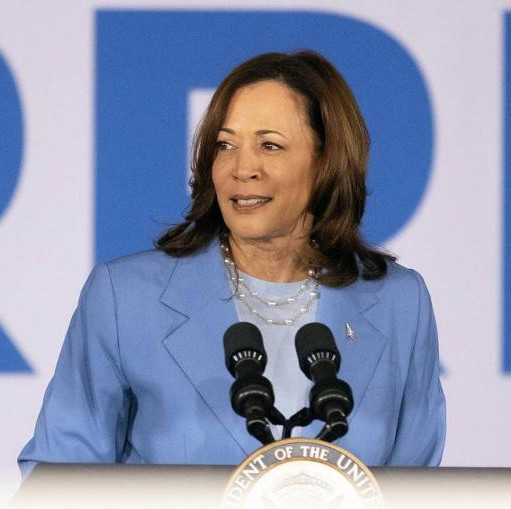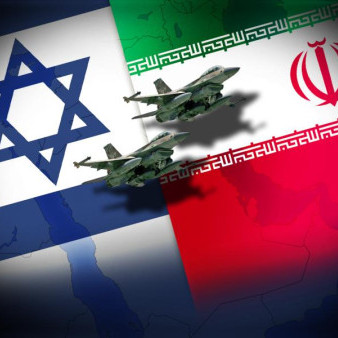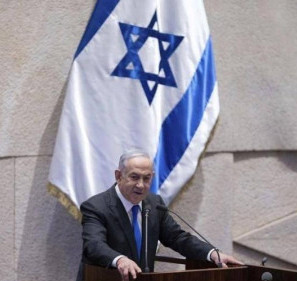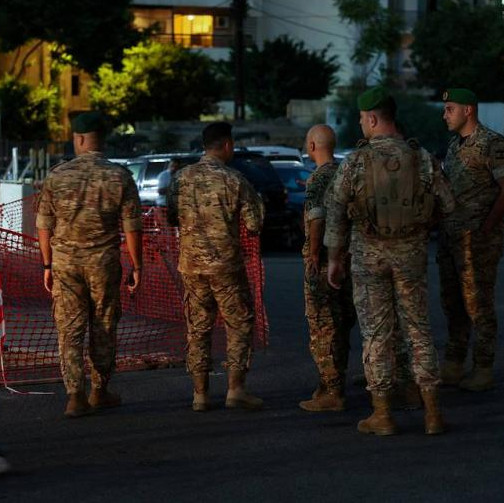- Press review: US lets Kiev use anti-personnel mines and Iran may halt uranium enrichment
- Press review: Uranium costs soar as Moscow updates nuclear doctrine and US OKs attacks
- Press review: Russian air defenses can down Western missiles as EU conducts live exercise
- G20 leaders adopt Rio de Janeiro Summit Declaration
The entire world is wondering whether the US will go to war with Iran after Trump urgently dispatched 1,500 more troops to the Mideast, but there's really nothing to worry about since this is just a marketing stunt for selling more arms to America's Gulf allies. The entire so-called "crisis" was caused by vague intelligence that supposedly came from Israel warning about Iran's allegedly secret deployment of missiles in the region.
It also comes on the tail end of the nuclear deal's ultimate unraveling after the Islamic Republic declared that it'll return to enriching uranium in response to the US refusing to renew its oil sanctions waiver for the country's main energy partners. This contextual backdrop was made all the more dramatic after the US accused Iran's Islamic Revolutionary Guard Corps (IRGC) of being behind the shadowy sabotage of oil tankers in the UAE earlier this month, sparking fears that this was either a false flag attack or a prelude to war.
The picture that was just painted is admittedly very concerning, but it's nevertheless incomplete, and the full one should put most people's fears to rest about the future. Hidden from plain sight is the fact that Russia and China's exercise of "military diplomacy" over the past couple of years has been hugely successful in wooing the Gulf Kingdoms into purchasing their wares, with Saudi Arabia and the UAE (the world's largest and seventh-largest arms customers according to the Stockholm International Peace Research Institute) being foremost among them.
Saudi Arabia already bought so many state-of-the-art attack drones from China that it asked the People's Republic to build a factory for them in the country. On top of that, Riyadh also purchased rocket launchers and other arms from Russia and is in talks with it for the S-400s too. As for the UAE, it's officially been Russia's strategic partner since last year and the two sides are naturally stepping up their military cooperation.
From an American strategic standpoint, this is extremely troublesome because its regional allies are becoming more independent in the military sphere, which will eventually translate to political and economic independence too with time. In order to avert the long-term scenario of "losing" the Gulf Kingdoms like could possibly happen if this trend is left unchecked, the US is resorting to a combination of anti-Iranian hysteria, its own "military diplomacy", and sanctions threats.
Fearmongering about these countries' prime nemesis is a surefire way to get their attention, after which Trump not only dispatched 1,500 troops in order to calm their false worries, but he even circumvented Congress in order to sell over $8 billion in arms to them that was being held up over concerns about their conduct in the War on Yemen. In case they still have a need for more weapons and consider purchasing them from Russia and/or China, they'll soon have to contend with the threat of CAATSA sanctions after the promulgation of a new American policy for punishing those countries' customers.
With this in mind, Trump's latest decision to send more American troops to the region appears less like a purely military move and more like a marketing stunt to justify the arms sales that he just authorized without Congressional approval. He couldn't have avoided intense criticism for this bold act of "military diplomacy" had there not been a supposedly urgent threat to explain it, ergo the drama that he stirred up about Iran.
While there are obvious reasons why intensifying military pressure on the Islamic Republic serves American interests, it can't be overlooked that it also provided the pretext for executing this $8 billion arms sale that was really intended to undermine his country's Russian and Chinese competitors. It'll now be more difficult for them to profit off of this lucrative market and make strategic inroads into it after its largest customers' military needs were mostly met. That's not to say that there's no future for their "military diplomacy" in this region, but just that it won't be as easy to practice as it was before this sale was authorized.
In terms of the bigger picture, a very distinct pattern is now emerging whereby the US hypes up what it portrays as the "regional threats" from Russia, China, and Iran in order to get its allies to purchase more American arms, usually pairing these sales with some dramatic military deployments to its rivals' part of the world in order to distract attention from these deals.
In none of these cases, however, does it seem that the US is seriously considering military action against any of those three potential targets, but is just chest-thumping in order to calm its allies' false worries. By playing to its allies' fears and manufacturing regional drama, the US is able to convince them to buy more of its arms instead of its rivals', which serves the dual strategic purposes of undermining its competitors and preventing its partners from becoming too independent.
DISCLAIMER: The author writes for this publication in a private capacity which is unrepresentative of anyone or any organization except for his own personal views. Nothing written by the author should ever be conflated with the editorial views or official positions of any other media outlet or institution.









